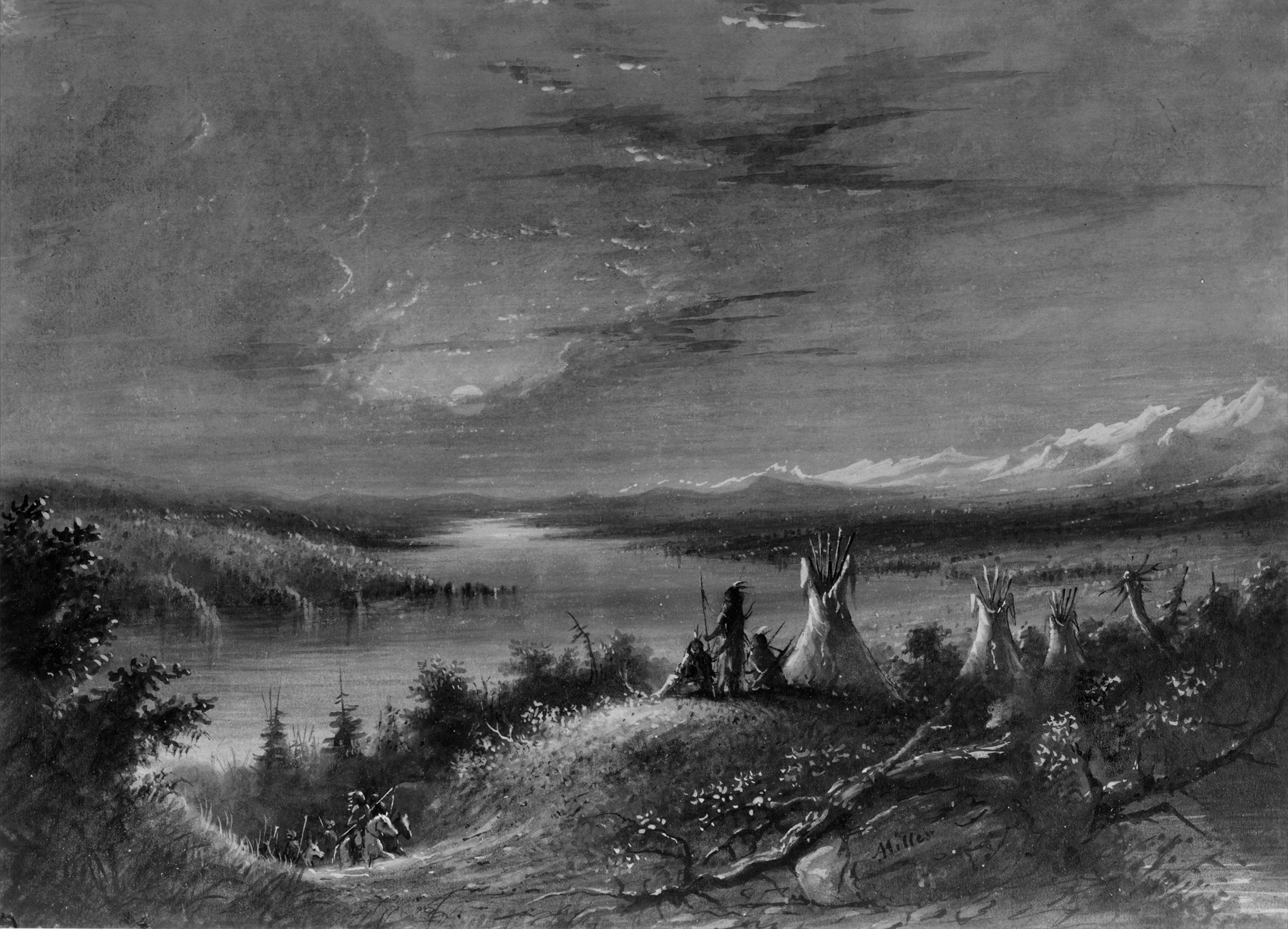River Eau Sucre
(18th and 19th Centuries )
Extracts from Alfred Jacob Miller’s original text, which accompanied his images of Native Americans, are included below for reference.
"The point of view here is some 40 or 50 miles from the mountains, whose summits are seen reflecting the light from the sun. In the immediate foreground are some Indian Lodges, with a chief and his satellites watching the return of a party who have been sent out on a marauding expedition, and are seen coming up the defile. The source of this river is in the vicinity of the South Pass, and ultimately finds its way to the Platte; before doing so, however, it passes through the famous Canon (Kanyon) called the 'Devil's Gate' of which a sketch will be forthcoming. From Fort Laramie along the Platte we had seen almost daily the Magpie, a large sprightly bird, long tailed, with plumage white and jet black,- it is never seen (we believe) in the States. The Cactus plant was also abundant, bearing large rich flowers, scarlet and white;- on the Eau Sucre it is less frequent. Dwarf trees, bearing excellent plums, were to be found occasionally, not to be despied by men, whose only change of diet was coffee and meat at breakfast;- meat and coffee at noon;- and da copo at night." A.J. Miller, extracted from "The West of Alfred Jacob Miller" (1837).
In July 1858 William T. Walters commissioned 200 watercolors at twelve dollars apiece from Baltimore born artist Alfred Jacob Miller. These paintings were each accompanied by a descriptive text, and were delivered in installments over the next twenty-one months and ultimately were bound in three albums. Transcriptions of field-sketches drawn during the 1837 expedition that Miller had undertaken to the annual fur-trader's rendezvous in the Green River Valley (in what is now western Wyoming), these watercolors are a unique record of the closing years of the western fur trade.
Inscription
Provenance
Provenance (from the French provenir, 'to come from/forth') is the chronology of the ownership, custody, or location of a historical object. Learn more about provenance at the Walters.
William T. Walters, Baltimore, 1858-1860, by commission; Henry Walters, Baltimore, 1894, by inheritance; Walters Art Museum, 1931, by bequest.
Exhibitions
| 1971 | Alfred Jacob Miller. The Walters Art Gallery, Baltimore. |
Geographies
USA (Place of Origin)
Measurements
H: 8 11/16 x W: 12 1/4 in. (22.1 x 31.1 cm)
Credit Line
Commissioned by William T. Walters, 1858-1860
Location in Museum
Not on view
Accession Number
In libraries, galleries, museums, and archives, an accession number is a unique identifier assigned to each object in the collection.
In libraries, galleries, museums, and archives, an accession number is a unique identifier assigned to each object in the collection.
37.1940.97



